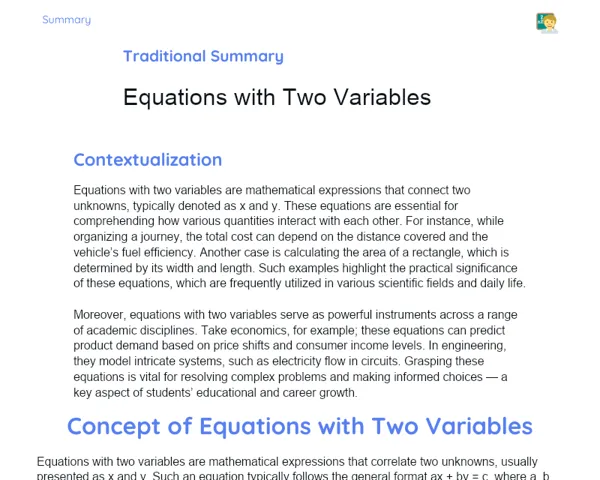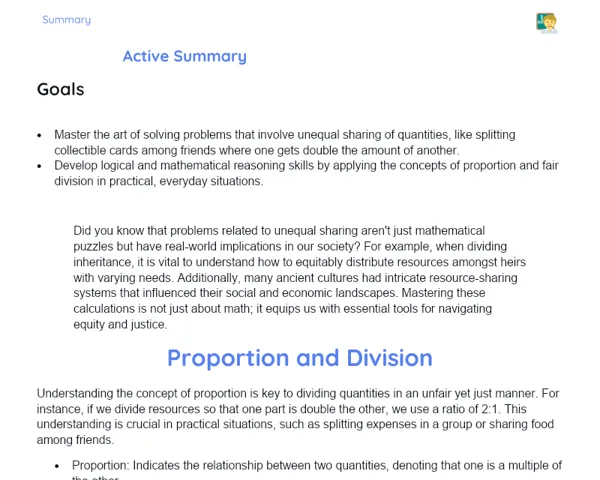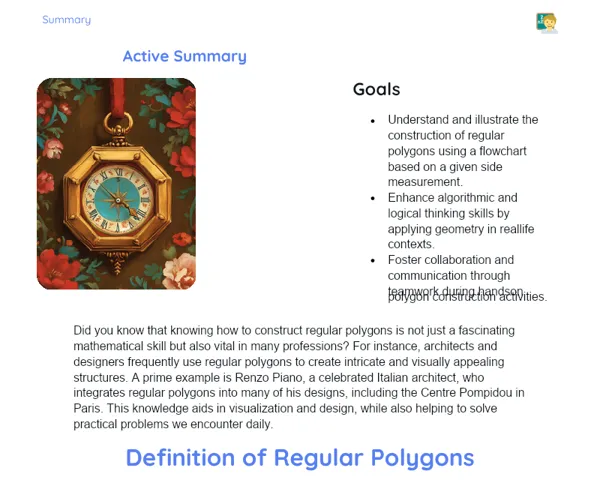Objectives
1. Enhance your ability to calculate the surface area of a sphere, including special cases like spherical caps and bowls.
2. Use the concept of spherical surface area to tackle real-life problems, like figuring out the area of a cricket ball.
Contextualization
Did you know that grasping the surface area of a sphere goes beyond mere math and plays a crucial role in various practical applications? For example, when designing sports balls like cricket, football, and tennis balls, accurate surface area calculations are vital to ensure optimal size and shape for athletes. This knowledge is also essential in fields such as aerospace engineering and astronomy, where understanding the surface area of celestial bodies is key for research and technological advancement.
Important Topics
Surface Area Formula of a Sphere
The formula to calculate the surface area of a sphere is A = 4πr², where A represents the surface area and r is the sphere's radius. This formula is crucial for grasping how spherical objects, from planets to sports balls, occupy space and interact with their environments.
-
The formula assumes a smooth, continuous surface for the sphere, which is a sound model for many real-life objects like planets and certain sports balls.
-
The constant π (pi) represents the ratio of a circle's circumference to its diameter, forming the backbone of various geometric formulas.
-
This formula's practical implications are vast, spanning product design to astronomical analysis, emphasizing math's significance in science and engineering.
Spherical Cap
A spherical cap is the part of a sphere that's cut by a plane that doesn’t intersect the sphere's center. These caps are frequently used in design and architecture for creating domes and bowls, and calculating their area presents an interesting geometric challenge.
-
To compute the area of a spherical cap, you can use the formula A = 2πrh, where r is the sphere's radius beneath the cap and h is the height of the cap.
-
This concept is critical for engineers and architects designing domed structures, as precise area calculations optimize material usage.
-
Understanding spherical caps enables students to visualize and recognize complex 3D shapes, enhancing their grasp of spatial geometry.
Bowl
A bowl features a spherical base combined with a cylindrical body, commonly seen in ceramics and product design. To find the surface area of a bowl, sum the areas of the spherical portion and the cylindrical portion.
-
The surface area of the spherical part is calculated as A = 4πr², where r is the radius of the bowl's spherical base.
-
The cylindrical part's surface area is calculated using A = 2πrh, where r is the base radius and h is the height of the cylinder.
-
This practical illustration of applying surface area formulas helps students understand how geometric shapes can be merged to create functional objects.
Key Terms
-
Surface Area of a Sphere: The extent of a sphere's surface, crucial for numerous practical and theoretical applications.
-
Spherical Cap: The segment of a sphere that is intersected by a plane that doesn’t pass through its center.
-
Bowl: A geometric shape that features a spherical base along with a cylindrical body, frequently employed in product design.
For Reflection
-
How might the calculation of a sphere's surface area change when accounting for irregular shapes?
-
In what ways can an understanding of the surface area of spherical objects influence product design in sectors like sports and technology?
-
Why is it essential to comprehend and apply spatial geometry concepts in everyday practical situations?
Important Conclusions
-
Today, we delved into the formula for the surface area of a sphere (A = 4πr²), which is vital not only for mathematics but also for its application in real-world contexts such as sports ball design and astronomy.
-
We examined spherical caps and bowls, highlighting their importance in various objects and structures we encounter daily, along with how accurate area calculations are crucial in fields like engineering and architecture.
-
We emphasized the significance of applying mathematics in practical contexts, making learning more engaging and relevant, and preparing you for real-world challenges and future career applications.
To Exercise Knowledge
To put our learning into practice, I recommend two activities: 1. Calculate the surface area of a cricket ball using a radius of 11 cm with the formula A = 4πr². 2. Sketch and create a mini-bowl using recyclable materials like paper or disposable cups and compute its total surface area. Compare your findings with a classmate to observe variations and discuss possible reasons for differences.
Challenge
Spatial Designer Challenge: Imagine you are tasked with designing a new space station featuring a spherical dome. Calculate the dome's surface area to determine the material required. Experiment with different radii and heights for the dome and discuss how these changes would influence the station's design.
Study Tips
-
Consistently review the surface area formula for spheres and practice with diverse examples to reinforce your understanding.
-
Try to visualize spheres, caps, and bowls in everyday objects around you. This will aid in comprehending how these shapes are present in design.
-
Explore applications of math or 3D modeling software to view interactive visualizations of spherical shapes and how variations in radius and height affect their surface areas.



